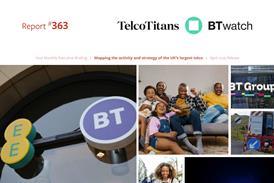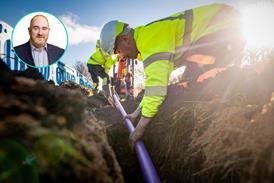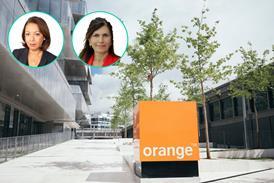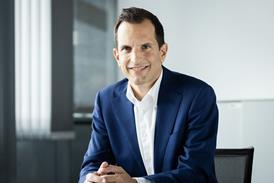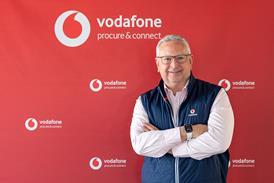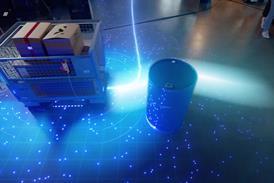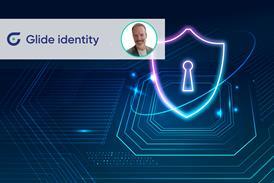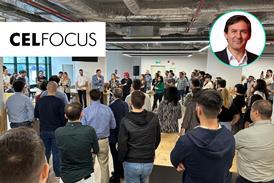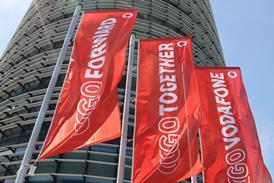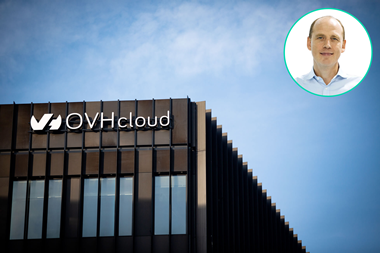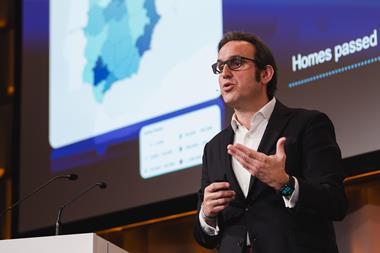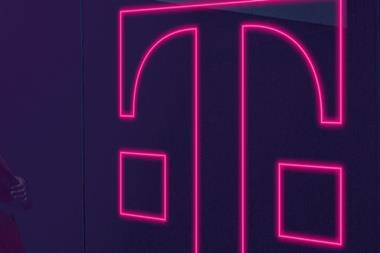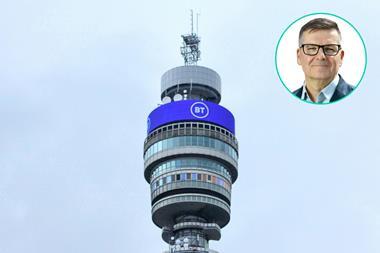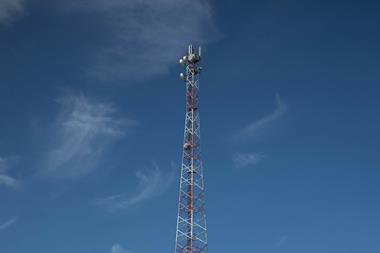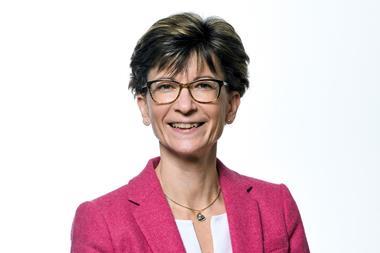- Established operators such as Vodafone are recognising the opportunities of deep network automation but don’t have the greenfield luxury of a clear path. Elisa Polystar believes this challenge can be addressed with the right roadmap.
- The automation architect positions itself as a trusted guide with a portfolio of use‑cases to boost efficiency and unlock monetisation opportunities, built on a decade blazing a trail with Nordic parent Elisa’s network, and tapping astute acquisitions such as DataOps specialist Cardinality.
- While self‑driving networks are the ultimate goal, Elisa Polystar stresses that a fresh mindset is the most important change for operators, which can open new digital service opportunities with the right data foundations.
- Operators are getting ready to move fast, and momentum is reaching a tipping point, with Elisa Polystar seeing more and more customers come to it with requests, ideas, and opportunities for collaboration.

There is a joke about a tourist lost in the countryside, trying to get directions to a famous landmark. “To get there”, he’s told by a local, “I wouldn’t start from here”.
For many brownfield telcos, that punchline can sum up their current whereabouts on the journey to network automation. While cloud‑native innovators such as Dish Network and Rakuten Mobile are able to set off towards creating an automated infrastructure unencumbered, established operators are weighed down by legacy. Decades‑long evolution of their business means functions and business units are approaching the journey from different standpoints.

That this journey may be complicated, and start from less‑than‑ideal circumstances, should not stop operators from embracing automation, according to specialist Elisa Polystar. Speaking to TelcoTitans, Steve Preston, Chief Commercial Officer for the business says, “what the greenfield operators are doing is amazing, and the reality is that brownfield operators need to evolve, both to become more efficient and to create new revenue streams”.
Elisa Polystar is well-placed to be a guide, having already taken on the journey itself. The business is able to draw on experience of real‑world automation deployments within an established operator business — including managing all the baggage that comes with that heritage.
The cloud‑native software provider was spun out of the pioneering work by Finnish operator Elisa on its own early adoption of network automation to prepare for the commercial future it foresaw as demand for data‑driven services in its market surged. This grounding is also closely informed by more than 100 other operator engagements.

Mikko Puuskari, Elisa Polystar’s Head of Automation, notes that not only does this operational and end‑user hinterland provide a decade of experience, it also continues to deliver ongoing insight into technology deployed in live network environments.
“We have a continuous dialogue with Elisa’s product teams on what are the biggest challenges right now, and how we could solve them”, he explains. This provides considerable intelligence, he says, with a heads‑up on “whether the latest sexy technology solutions are actually meaningful and beneficial in practice”. This culture of inquiry and responsiveness is fundamental to Elisa Polystar.
This know‑how is as relevant to top‑tier global groups taking on the journey as it is to early adopters, Preston says, citing Vodafone as a major operator that is making the necessary preparations to move forward with increasingly automated infrastructure.
“ We need to clear the table ready for this new era, this new evolution. That means doing exactly what Vodafone is doing — getting rid of the silos. You cannot manage a business and just keep bringing in new suppliers every time new technologies come in. You can’t keep on building on top of building, and putting new targets on old environments. Operators need to avoid looking back, and focus and prepare for the new journey ahead. ”
Preston.
Elisa Polystar’s street cred: been there, done that…
Elisa Polystar is the wholly owned international solutions arm of Finland‑based telecoms group Elisa. The business came to prominence when the market‑leading telco broke new ground on automation, most notably when introducing a complete Virtual Network Operations Centre, which encapsulated the radical rethink on operations and the cost base the telco had embraced.
Elisa’s early adoption of a “hyper‑automation” approach is paying dividends for the operator as it continues towards being cloud‑native, with robust infrastructure reliability, strengthening Net Promoter Scores, and steady cost levels, despite surging network demand. Its transformation engine is now on a parallel path, paired with continued innovation at Elisa Polystar, which commoditises the experience to accelerate other operators’ automation progress internationally.
Automation a journey, not a destination
That credo that operators’ automation journeys will be built on passing a series of milestones is reflected in Elisa Polystar’s belief in employing compelling but simple use‑cases to set the course, and then adding layers of intelligence. This starts with data management, followed by proof‑based analytics that draw on network, service, and subscriber device insights.
With this foundation, AI‑driven analytics are set to enable both predictive maintenance and predictive customer insight (interwoven with churn and Net Promoter Score CX metrics, for example)¸ with automation the “cherry on top”, according to Puuskari.
The extent to which networks will one day become completely autonomous remains unclear, but Elisa Polystar is continuing to develop its portfolio and platform to expand the boundaries of what automation can do.
“ Self‑driving networks are the focus of portfolio development, and AI and machine learning will be a big part of that. We are combining our own capabilities to deliver microservice‑based cloud architecture and build customer solutions flexibly drawing on them all. ”
Puuskari.
Preston stresses that delivering zero‑touch infrastructure should be considered as more about the progression than the ultimate destination.
“ I don’t think zero‑touch will reach everywhere, but automation will become the norm. Vodafone is already advanced, and an example of what can be done, but for any operator, it will really depend on the results they can get and how easy it is to implement. ”
Preston.
Getting transformation up to speed: streamlined data, quick wins
Through its portfolio of cloud‑native automation, analytics, and data management tools, Elisa Polystar has built a platform to support the fundamental transformation of network infrastructure and operations, moving ever closer towards the vision of zero‑touch automation and implementation of ‘self‑driving networks’.
Getting up to maximum speed will require smoothly moving through the gears. Puuskari guides that, while some operators want to automate everything at once, an iterative process will bring more effective progress. “Start with rule‑based use‑cases, where you automate the manual work; then you can quickly move into more sophisticated solutions that make the most of AI and ML”, he advises, “It’s about being practical in the process and road‑mapping”.
Preston firmly positions effective data ingestion as a powerful booster for meaningful automation. Operators in the new cloud‑based era are under a deluge of data, with the challenge to use the right data in the right way — a challenge Vodafone was helped to address through a ground‑breaking collaboration with Google Cloud that helped put Cardinality on the map.
He says that an operator able to not only access the data about its network operation and performance but also understand the optimal way to leverage is well positioned to make automation a success. Preston adds that this capability can also address operator concerns regarding the risks of rip‑and‑replace around old systems — “You decide what to move and when, at your own pace”.
Let’s replace the silos with a data ingestion platform that’s able to scale and bring in data from 100% of sources and share it with 100% of the business.
When we reach that point, and have the ‘must‑have’ use‑cases, such as customer experience management and self‑organising network solutions, for example, it will provide the underlying foundation for automation. There’s a journey needed, but to get to automation, you need to make sure that the foundation is ready and the foundation is about DataOps. ”
Preston.
Preston also stresses that the need to find new growth opportunities should not, and need not, be put on hold until the challenges of operational efficiency have been addressed. Automation can help pursue both goals at once.
“ The financial pressures within operators are tough, and there’s no ‘Eureka’ solution that’s going to turn that around fast. As well as transformation from an efficiency perspective, they need to look at ways to grow, and new ways of generating revenues. There are some great opportunities with IoT, with smart cities, ports, private 5G networks, etc. There are lots of opportunities out there for operators, beyond the world of cost cutting. ”
Preston.
Realising the Elisa Polystar vision: Cardinality and Vodafone
Reflecting on the 2022 deal that brought Cardinality — and Preston — into the fold, the commercial chief lauds Elisa Polystar as “true thought leaders” that recognised the role that DataOps will play in future automation.
Preston spent three years as Cardinality CEO prior to its integration with Elisa Polystar. During that time, he oversaw transition of the Cardinality DataOps platform towards a cloud‑native foundation, and its evolution as an enabler capable of ingesting and presenting tens of billions of points of network data in a manner
that can deliver insights on performance and CX with predictive capabilities at pace. This opened the door to assisting operators wanting to embrace the opportunities and challenges that the big data capabilities of hyperscalers presented in the network space, and led to its engagement with Vodafone.
The relationship with Vodafone blossomed, with Cardinality’s technology taking a role alongside Google Cloud Platform at the heart of the operator’s Unified Performance Management platform, running across multiple OpCos and working to dramatically simplify network performance monitoring and maintenance. Vodafone flagged the tie‑up as a key facet of its move to automate network management, and, according to Preston, the pair continue to partner on new applications that support the pursuit of zero‑touch networks.
Cardinality is not Elisa Polystar’s only acquisition, also buying FRINX in 2022 to add low‑code capabilities to transport layer automation, and the business is now bringing its capabilities together as a unified platform that Preston believes will address the fundamental challenges faced by operators working to transform 20 or more years of legacy.
“ We have automation products now, such as Intelligent Energy Saving, which are already proving popular, but we’re aiming for a cloud‑native platform and delivering a roadmap that will take operators where they need to go on automation. ”
Preston.
Operators now ready to sign up for the ride
Moving towards network automation is still a relatively new concept for many operators, and Puuskari recognises that it may be natural to hesitate before embarking on projects. Two years ago, the idea of automating networks was deemed interesting, but “maybe a bit scary”.
Instead of putting together comforting RFPs, however, operators need to adopt a new mindset with a clear reason and motivation for choosing the automation path, which may require courage. This forward‑looking outlook is now becoming widespread, Puuskari believes.
Preston agrees that now, with greenfield networks progressing in several markets, and brownfield operators such as Elisa demonstrating the long‑term potential of network automation, along with deployments of targeted use‑cases by operators including Vodafone and T‑Mobile Czech Republic, “people get it”.
This assimilation does not always come quickly, but, once results materialise, it can spread rapidly. “There is a lag, because ‘proving results’ takes time”, he says, “but, once the outcomes become apparent, we see a lot of new interest; then finance departments see the value and projects get expanded and widened”.
Operations support systems transformation is an area where Preston considers opportunities will emerge for greater automation as operators tackle complexity — “they just need to develop a plan for getting from the old way to the new”.
The conversation is certainly changing. According to the Elisa Polystar team, operators are increasingly coming to them with their needs, rather than needing to be shown what they can do with automated solutions. Regardless of starting point, the journey for many operators has already begun. “Every customer is coming to us with new requests”, says Puuskari; “this is the year automation really takes off”.
Elisa Polystar profile
Elisa Polystar, part of Elisa Group, is an innovative provider of integrated, cloud‑native AI‑driven data management, analytics, and automation solutions proven with hundreds of CSPs globally. Its products fuel digital transformation and help reduce OPEX and CAPEX costs, while enhancing customer experiences.
It unlocks the benefits of closed‑loop network operations and optimisation, and automation, across domains — delivering self‑driving networks. The solutions are compatible with any network and any service, including IoT and 5G network slicing.
With its background as a subsidiary of Finland’s largest CSP, Elisa Polystar’s solutions are developed in a live network, with the unique needs of operators in mind — by an operator, for operators.
For more information, visit www.elisapolystar.com.





